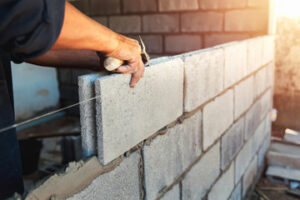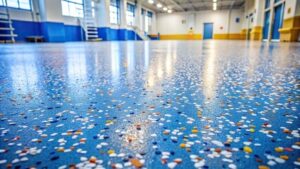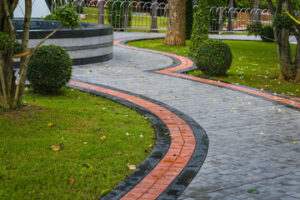Charleston Masonry is a building construction technique using brick, concrete blocks, and structural clay tile held together with mortar. It can be weight-bearing and used to hold up a roof or purely decorative, as in the case of the ornate Gothic cathedral’s flying buttresses.

Many advances in materials and technology are pushing the boundaries of masonry’s capabilities. Architects can use these advances to enhance durability and energy efficiency while minimizing the impact of construction on the environment.
Foundation work may be the down-and-dirty side of homebuilding, but it’s vital to ensuring the safety and durability of a structure. This comprehensive guide explains how to construct foundations using masonry, including details on footings and foundation walls, as well as concrete slabs. In addition, pro builders share their tips on how to waterproof a foundation to prevent basement leaks and odors, and how to use brick to build patios, walkways, firepits, and stone walls in the yard.
Masonry foundations offer robust support and timeless appeal for residential structures. However, they can require periodic inspections and repairs to address cracking and other issues.
Choosing the right masonry foundation type is essential to building a strong and stable home. The type of foundation selected will depend on factors such as the soil type and the presence or absence of bedrock.
Poured concrete and masonry block foundations are both highly durable, but each offers unique benefits in different areas. Concrete offers greater resistance to damage from hydrostatic pressure, while masonry has better load-bearing capabilities.
Concrete and masonry foundations must be designed to support both the dead loads of the structure above and the imposed loads transferred from the foundation to the surrounding soil. This transfer is critical to preventing differential settlement, which can affect the stability of the entire structure.
Masonry foundations are typically designed to withstand shear stress caused by wind, earthquakes, or backfill forces that push against the walls. Shear stress is a combination of axial force and bending moment, which can be reduced by increasing wall thickness or masonry compressive strength.
A masonry strip foundation is ideal for small structures in good soil. This type of foundation is considerably wide at the base and gradually narrows upward, which distributes imposed loads evenly over a large area and improves stability.
A masonry spread or isolated footing is another popular choice for residential buildings. These footings are positioned beneath load-bearing walls and typically have a wider bottom than the top portion. This design is ideal for transferring imposed loads from the foundation to the surrounding soil and improving stability.
Walls
Masonry walls serve a variety of purposes, from providing support and structure to defining an area for safety and shelter. They can be load-bearing or non-load-bearing and come in various shapes and sizes. Load-bearing masonry walls carry the weight of a building’s roof and floors and transfer them down to the foundation. These walls are crucial for a building’s structural integrity. It is important to properly assess whether a wall is load bearing or not before beginning construction. A professional contractor or structural engineer can help determine this.
Brick is a popular material for load-bearing walls in residential construction. Masonry blocks can also be used for load-bearing walls in commercial construction and retaining walls. Concrete masonry is an excellent choice for foundations and basements because it’s resistant to termites and provides insulation. In addition to its durability, masonry is long-lasting and easy to maintain. It is also energy-efficient. Brick and stone walls provide natural insulation that helps regulate indoor temperatures, which can reduce energy costs.
Non-load-bearing masonry walls are typically constructed from block materials, which are easier to lay than bricks. They can be faced with brick masonry or concrete, or they can stand alone as walls for factories, garages, and other buildings where appearance isn’t important. In modern construction, block walls are often covered with veneered brick masonry for aesthetic appeal.
Framing walls in a home are typically constructed using studs and OSB sheathing. Sheathing is nailed to the studs, creating an effective structure that resists lateral forces. The sheathing is then covered with drywall to give the walls rigidity. It is important to use the right materials for sheathing and drywall, as these components can affect the strength of the wall.
Internal masonry walls are sometimes framed with timber or metal frame. It is essential to ensure that a new internal masonry wall is supported adequately, especially if it is load-bearing. A professional contractor or structural engineer can determine if a wall is required to bear the weight of a structure, and if so, how much weight it is expected to support.
Roofs
Masonry can be used for a variety of roofing systems. It can also be built as a structural component or incorporated into a design feature. The ancient Roman architect and engineer Vitruvius coined a phrase for the ideal material or form: Firmitas (strength), Utilitas (usefulness) and Venustas (beauty). The three attributes are interconnected and can be applied to the construction of masonry buildings, from foundations to decorative veneers.
Brick masonry is one of the most popular methods of construction, offering homeowners a durable and attractive material for their home. Bricks are typically stacked together and held in place with mortar to create walls, which can be load-bearing or non-load-bearing. Load-bearing walls are ideal for supporting roofs and floors, while non-load-bearing walls serve primarily as partitions or decorative elements.
Masonry is resistant to break-ins, fires and severe weather conditions, helping to keep insurance rates lower than other types of structures. Brick or stone masonry structures are also easier to maintain and don’t require constant painting or staining, saving you money in maintenance costs. Brick and stone also offer superior insulation, keeping indoors warmer in the winter and cooler in summer while regulating humidity levels.
Masonry is also suitable for walkways, adding aesthetic and functionality to landscaped areas. Brick or stone walkways are a common choice, resting on a crushed rock base to provide drainage and allow for slight movement with temperature changes. Regular inspections can help extend the lifespan of masonry structures, preventing minor issues from becoming major repairs.
Decorative elements
Masonry materials like brick, stone, and concrete provide structural support, but they can also be visually stunning. The versatility of these materials lets architects and builders incorporate masonry into virtually every aspect of the building design. Whether it’s an eye-catching backsplash in the kitchen or a stunning courtyard, masonry can add depth and character to a home.
The solid, stable surfaces provided by masonry allow wall painting techniques like fresco and trompe-l’oeil to thrive. The combination of a unique color palette and the illusionistic effects created by these arts create visual interest and depth. Masonry can even serve as a backdrop to a living wall of greenery, adding natural beauty and texture to a home.
When it comes to brick, a variety of bond patterns and brick detailing can create distinct visual accents. A raking bond focuses on horizontal emphasis, while a herringbone pattern creates a distinctive zigzag effect. Other decorative masonry details include quoins, which adorn the corners of buildings and act as ornamental accents. Quoins can be made from different types of masonry like stone, precast blocks, or terracotta, and can feature a variety of different textured surface finishes.
Modernism sought to break from traditional architectural styles, but masonry has continued to play an important role in the development of contemporary architecture. Frank Lloyd Wright’s Fallingwater, for example, showcases the power of masonry construction by combining stone walls with an innovative structure.
While the most common uses of masonry are for foundations and walls, it can also be used for doors, arches, and other decorative elements. Masonry can be combined with other materials like glass to enhance the look of an entranceway or create a unique walkway. Masonry can also be incorporated into the landscaping of a home to add privacy or to create focal points in gardens.
Incorporating masonry into the home is an excellent way to express a homeowner’s personal style and make the space feel more welcoming and inviting. Brick and stone offer a variety of color options, from earth tones to bold hues. Masonry products can be tinted, frosted, or textured to give them a unique look and complement a home’s architecture.


